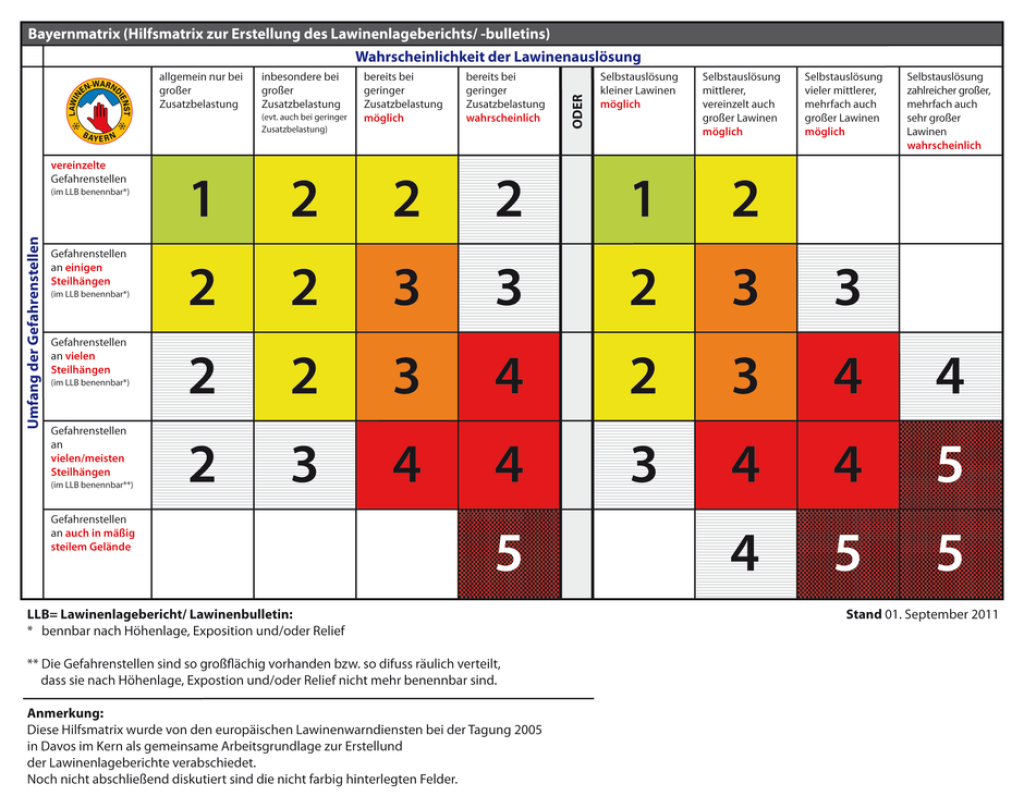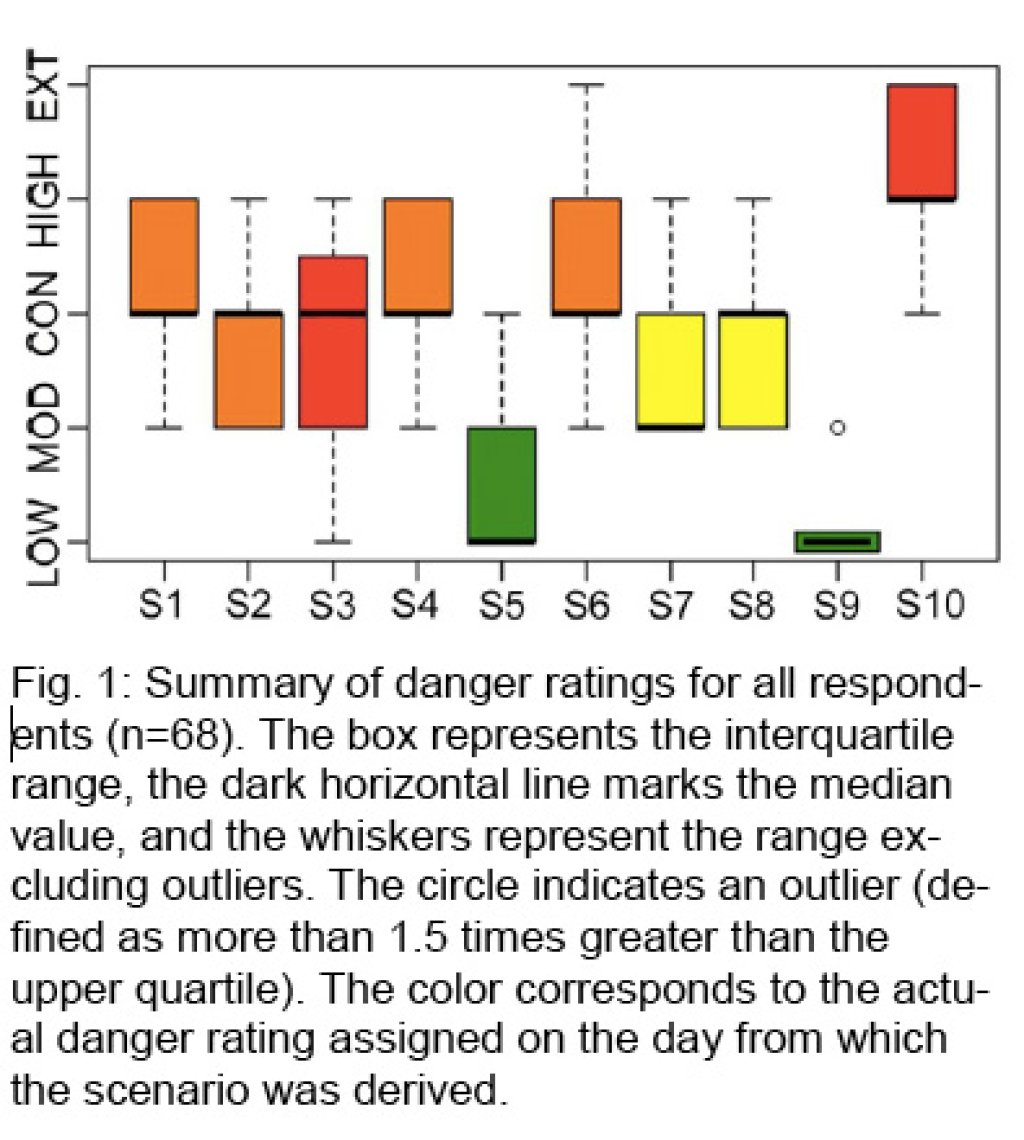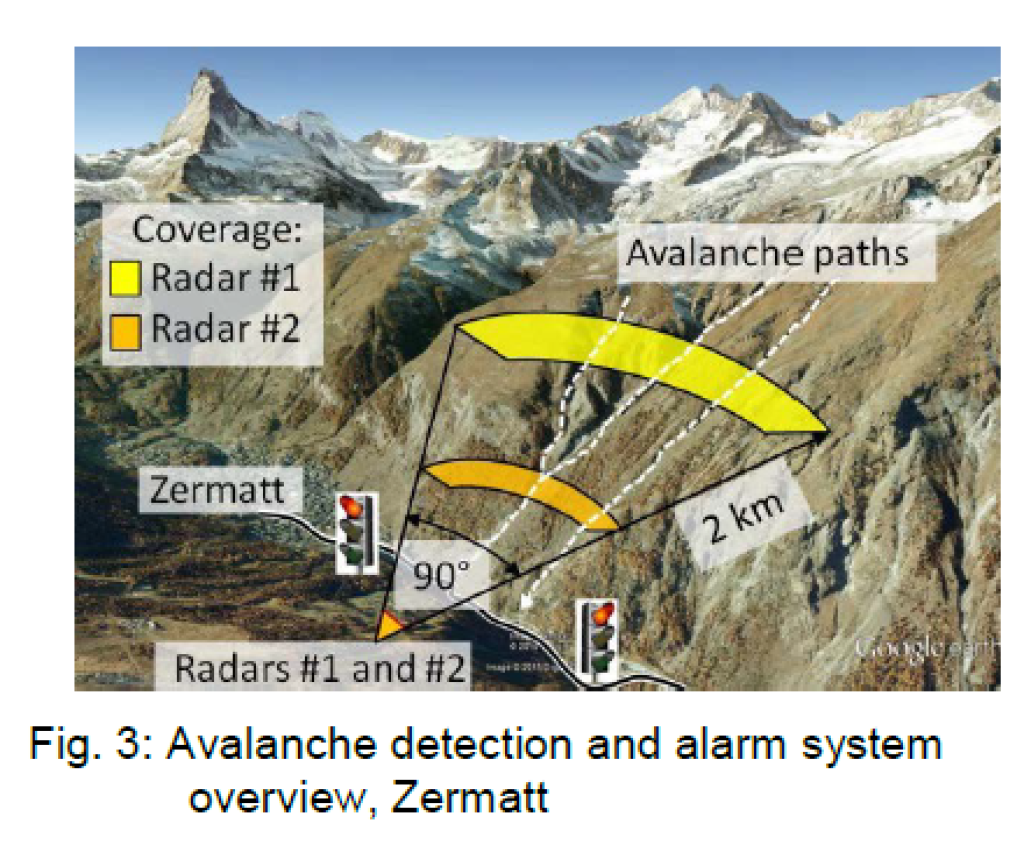Continuing with the International Snow Science Workshop 2016 and the studies presented there: After we have already dealt with some topics in Part 1 that have more to do with the nature of snow and avalanches, we are now moving on to people and how they deal with avalanches. Avalanche reports and the authorities that issue them are extremely important for us as winter sports enthusiasts, but their job is not always easy. On the one hand, of course, because the snow doesn't always do what you might expect, and on the other because very complex issues have to be communicated as simply and intuitively as possible. What are the current issues here and how are they approached?
Danger level: consistency between warning services?
Avalanche warning services have the difficult task of summarizing a lot of different information in a single number: the danger level. Of course, the situation reports do not only contain the danger level, but for many it is the most important - although hopefully not the only - perceived content. Avalanche watchers from the USA have asked themselves the following question: Do avalanche warnings with the same information always come to the same conclusion, i.e. the same danger level? The study refers to the North American danger level scale, which differs slightly from the European scale and is primarily used in the USA, Canada and New Zealand. The definition of the hazard levels is somewhat less clear in the American version. To answer the initial question, 10 hypothetical snow scenarios were developed based on old situation reports from various regions. For each scenario, there was a brief summary of the weather in recent days, the snowpack, recent avalanche events, etc.
68 avalanche forecasters currently working in the public sector in the USA, Canada and New Zealand were asked to assign a danger level for the 10 scenarios. The evaluation shows that different danger levels are chosen, even if the results "roughly" match. In none of the 10 scenarios was the same level selected by all participants and in 9 of the 10 scenarios at least 3 different levels were specified. In most cases, the majority of participants selected the level that was actually issued. Deviating information was generally only one level higher or lower. The highest level of agreement was found for low and moderate scenarios. At higher hazard levels, the agreement is poorer, especially in scenarios that are difficult to forecast, in which a previously dry old snow cover is soaked or there is an old snow problem.
The authors conclude that although there is general consistency, the variability between individual countries, institutions and people still requires attention. Greater cooperation between warning services and joint training is needed for more consistent assessments. It is also suggested that more weight should be given to information other than the threat level in the situation report. It is emphasized that the survey cannot be directly compared with operations for various reasons. Avalanche forecasters typically benefit greatly from monitoring the snowpack throughout the season - a knowledge base that was inherently lacking in the survey scenarios.
Study: Brian Lazar, Simon Trautman, Mike Cooperstein, Ethan Greene, Karl Birkeland, 2016. North American Avalanche Danger Scale: Do Backcountry Forecasters apply it ocnsistently? Proceedings, International Snow Science Workshop, Breckenridge, Colorado.



